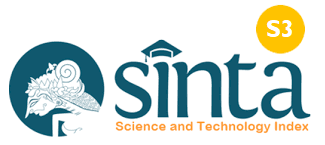Scouting as a Means of Fostering Discipline of SMP N 9 Samarinda Students
DOI:
https://doi.org/10.37329/cetta.v8i3.4576Keywords:
Character, Discipline, Scouting ActivitiesAbstract
This study aims to examine in depth the role of scouting activities in fostering student discipline at SMP Negeri 9 Samarinda. The background of this study is the low awareness of student discipline which can be seen from tardiness, incompleteness of attributes, and violation of rules even though school sanctions have been applied. Scouting was chosen as an informal media that is loaded with the values of discipline, responsibility, cooperation, and toughness, so that it is considered effective as a character building strategy. This research uses a qualitative descriptive method with direct observation techniques, interviews with coaches, schools, students, and documentation of activities such as attendance and competition reports. The results of the study show that activities such as routine exercises, marching, outbound, camps, and skill competitions are able to increase students' awareness of discipline, neatness, and compliance with rules. The habituation method through weekly exercises, ceremonies, educational sanctions, and awarding achievements has proven to be effective in instilling discipline in a sustainable manner. The pattern of positive and negative reinforcement forms the intrinsic motivation of students so that they obey not because of fear of punishment, but because of personal awareness. However, this study also found challenges such as the variability of coach commitment, limited facilities and funds, and the lack of systematic evaluation of student character. Therefore, it is recommended that schools increase the frequency and variety of scouting activities, establish cooperation with parents and external institutions, and train coaches in effective activity management and sanctioning.
References
Anderson, A., & Hinton, T. (2021). Kepanduan dan pendidikan karakter: Studi longitudinal dalam pengembangan pemuda. Jurnal Pemuda dan Remaja, 50(3), 567–584.
Brooks, DM, & Li, C. (2022). Mengembangkan disiplin melalui pendidikan luar ruangan yang terstruktur: Studi komparatif. Pengajaran dan Pendidikan Guru, 108, 103543.
Brown, SJ, & Nelsen, R. (2023). Pembelajaran berdasarkan pengalaman dan pengaruhnya terhadap pengaturan diri siswa. Jurnal Internasional Penelitian Pendidikan, 120, 102135.
Cairns, J., & Jenkins, L. (2020). Menumbuhkan ketahanan melalui program Kepramuka di Asia Tenggara. Pemuda & Masyarakat, 52(8), 1124–1143.
Choudhury, A. (2021). Memahami disiplin melalui ekstrakurikuler yang dipimpin siswa. Pendidikan dan Masyarakat Perkotaan, 53(5), 495–515.
Daniels, RJ, & Smith, M. (2020). Pembelajaran di luar ruangan dan perubahan perilaku: Perspektif ekologis. Penelitian Pendidikan Lingkungan, 26(9), 1282–1300.
Dewar, T., & Shearman, R. (2024). Menanamkan pendidikan nilai-nilai melalui Kepanduan di sekolah-sekolah dengan sumber daya rendah. Bandingkan: Jurnal Pendidikan Komparatif dan Internasional, 54(2), 157–173.
Fok, W., & Lim, H. (2023). Karakter dan disiplin melalui kelompok berseragam: Studi kasus Singapura. Jurnal Pendidikan Asia Pasifik, 43(1), 78–91.
Green, P., & Allen, S. (2021). Motivasi dan disiplin di kalangan siswa sekolah menengah dalam pendidikan luar ruangan. Jurnal Pendidikan Eksperimental, 89(4), 611–625.
Hamid, R., & Nurhadi, A. (2022). Kepemimpinan pemuda melalui kepramukaan: Bukti dari Malaysia dan Indonesia. Tinjauan Layanan Anak dan Remaja, 135, 106339.
Hodges, K., & Montgomery, H. (2021). Menghubungkan pembelajaran pengalaman dan perkembangan moral di masa remaja. Jurnal Pendidikan Moral, 50(1), 14–29.
Kohn, JM (2020). Mengevaluasi program pendidikan karakter berbasis sekolah. Tinjauan Penelitian Pendidikan, 30, 100344.
Lickona, T., & Davidson, M. (2023). Pendidikan karakter melalui pembelajaran non-formal: Menilai kembali Kepramuka berbasis sekolah. Filsafat dan Teori Pendidikan, 55(6), 677–692.
Lim, CY, & Tan, S. H. (2022). Disiplin yang dipimpin oleh teman sebaya dalam Kepramukaan: Kasus pengembangan motivasi intrinsik. Studi Pemuda Australia, 41(1), 45–61.
McLaren, K., & Williams, J. (2024). Psikologi kepatuhan: Dari ketakutan ke disiplin diri. Jurnal Psikologi Pendidikan, 116(2), 231–247.
Oswald, M. (2021). Kepanduan untuk karakter: Kepemimpinan, nilai, dan hubungan pengembangan pemuda. Layanan Anak & Remaja, 42(1), 35–50.
Sandberg, EA, & Knudson, K. (2023). Pengambilan keputusan moral pada remaja yang terlibat dalam program kepemimpinan luar ruangan. Jurnal Remaja, 97, 44–57.
Shah, R., & Hashim, R. (2020). Studi lintas nasional tentang Kepanduan dan perilaku sipil. Bandingkan, 50(3), 381–400.
Sugimoto, Y., & Tanaka, R. (2023). Dampak program pemuda berseragam terhadap keterlibatan sekolah di Jepang. Jurnal Internasional Remaja dan Remaja, 28(1), 115–132.
Wong, A., & Kee, T. (2022). Pendidikan karakter di luar ruang kelas: Bukti empiris dari kamp Pramuka. Pendidikan, Kewarganegaraan dan Keadilan Sosial, 17(2), 140–158.
Downloads
Published
How to Cite
Issue
Section
License
Copyright (c) 2025 Indah Dwi Lestari, Suryaningsi Suryaningsi, Asnar Asnar, Novita Majid

This work is licensed under a Creative Commons Attribution-ShareAlike 4.0 International License.
An author who publishes in the Cetta : Jurnal Ilmu Pendidikan agrees to the following terms:
- Author retains the copyright and grants the journal the right of first publication of the work simultaneously licensed under the Creative Commons Attribution-ShareAlike 4.0 License that allows others to share the work with an acknowledgement of the work's authorship and initial publication in this journal
- Author is able to enter into separate, additional contractual arrangements for the non-exclusive distribution of the journal's published version of the work (e.g., post it to an institutional repository or publish it in a book) with the acknowledgement of its initial publication in this journal.
- Author is permitted and encouraged to post his/her work online (e.g., in institutional repositories or on their website) prior to and during the submission process, as it can lead to productive exchanges, as well as earlier and greater citation of the published work (See The Effect of Open Access).
Read more about the Creative Commons Attribution-ShareAlike 4.0 Licence here: https://creativecommons.org/licenses/by-sa/4.0/.





